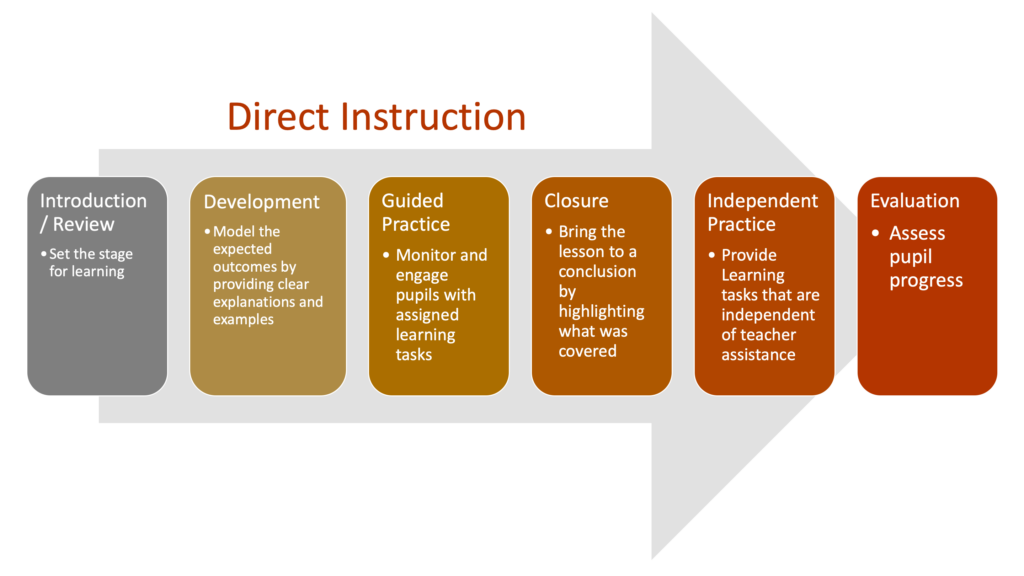Direct instruction is a teacher-directed instructional approach, which means this form is that teachers provide learning methods and knowledge directly to students in the classroom. (Renard, 2019) Compared with other emerging teaching methods, direct instruction is a more traditional and effective teaching mode, and is more suitable for most study requirements. The subject we choose today—personal finance is also equally applicable to this teaching method. This method generally follows 6 steps:

- Introduction
There are two goals at the beginning: the first is the teacher can use an entry ticket, Mentimeter, or arithmetic widget to find out the basic financial background of the students. The second is to provide a guideline for the students to introduce what we will learn in this course so that students will have a basic understanding of the course setting to learn better.
- Present new material
We can present new materials by these 2 methods: giving a lecture or demonstration. For personal finance, using the form of storytelling or photo widgets to state the main points in a lecture, is conducive to improving the visual experience, enriching the interest in learning, and making it easier for students to accept.
- Guided practice
This is a process of increasing student engagement by setting questions to answer. For example, the teacher can set a specific financial management topic: how to allocate one’s funds reasonably for personal financial management. Communicate and explore in the form of pairs, and summarize a conclusion to report.
- Feedback and correctives
Through student performance, teachers can help students by promptly pointing out their right and wrong and giving corresponding feedback.
- Independent practice
After the theoretical study and questions are resolved, the students already have a relatively strong financial management learning ability. At this time, teachers can send exercises and quizzes using multiple-choice questions and mind maps to detect students’ learning levels.
- Evaluation
By collecting and summarizing students’ data, teachers can determine whether the students have mastered the relevant content of personal finance, to determine whether the direct instruction is effective or not.
Using direct guidance to learn personal finance, students can easily acquire personal finance-related knowledge through the teacher’s introduction. At the same time, teachers can closely grasp the students’ learning situation and make corresponding adjustments, which is a well-controlled and more efficient learning method.
References:
Renard, L. (2019, March 28). Direct instruction – A practical guide to effective teaching. BookWidgets. Retrieved October 9, 2022, from https://www.bookwidgets.com/blog/2019/03/direct-instruction-a-practical-guide-to-effective-teaching
Comments on Claire Liu’s blog post #2—Experiential Learning:
Hi Claire! After reading your post I learned that experiential learning is a more interesting way to learn than generalized direct instruction. Learners can learn by doing with curiosity to explore problems, discover and solve problems in practice. This method pays more attention to the learner’s autonomy and participation, which can greatly improve the learner’s enthusiasm for learning. David Kolb’s model you gave also easily and clearly describes the process of this learning method. I am very interested in this learning method, and I will try this learning method to learn new things in the future!
Link to Claire Liu’s post:
I really like how you incorporated the six steps of the direct instruction approach into teaching your interactive learning resource topic! It’s a fantastic idea to use storytelling and photos to present new materials. This can enhance emotional interest and cognitive attention and foster knowledge acquisition. We tend to remember information and experiences that trigger an emotional response better.
Please do not forget to provide appropriate attribution to the image in APA style.